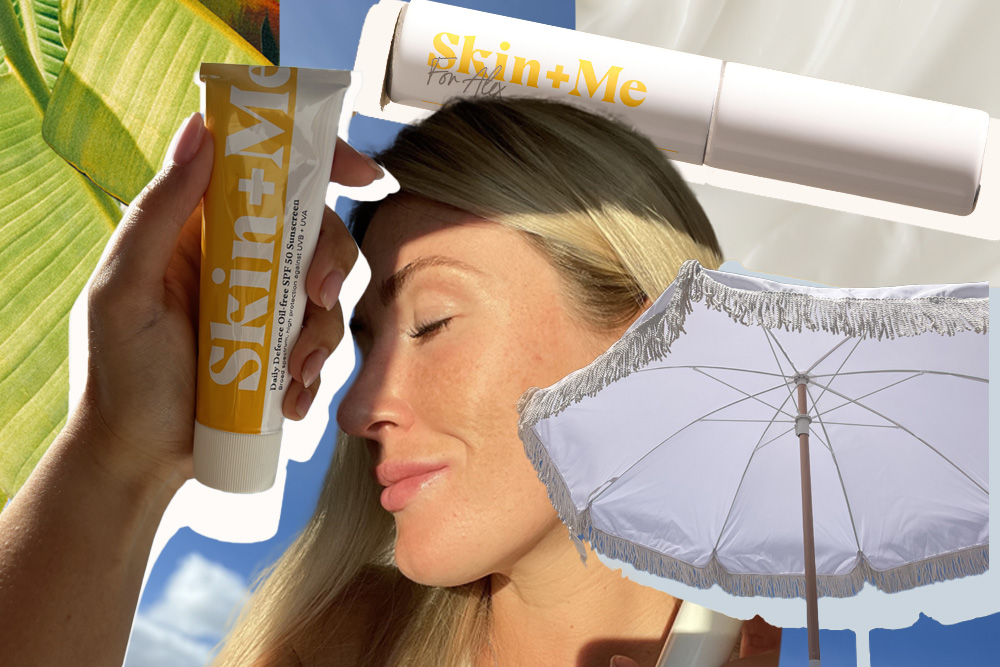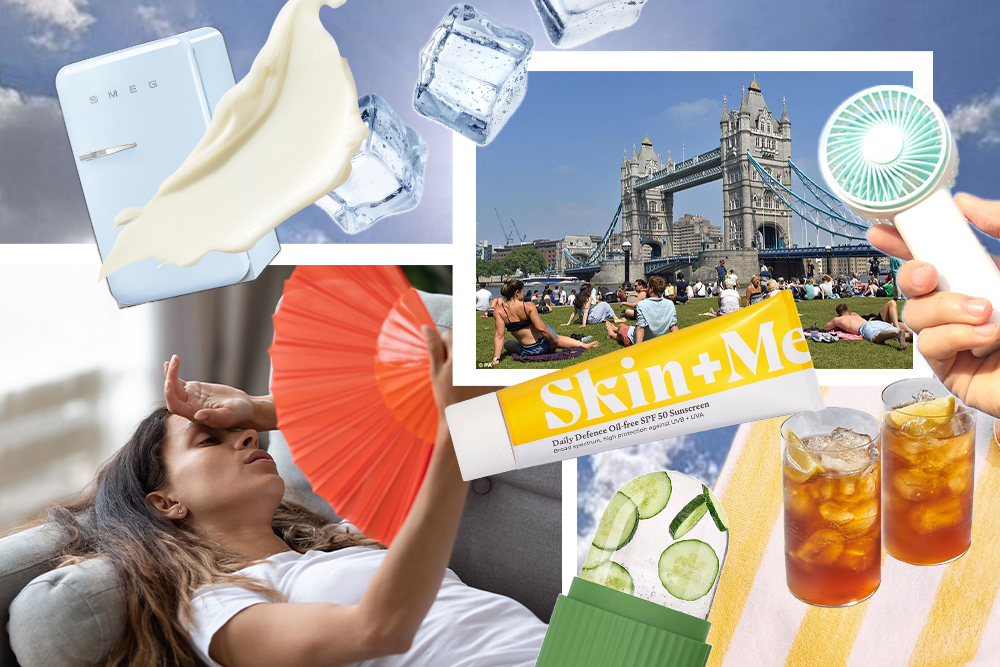Melasma 101

Link to share article here:
How To Get Your Skin Ready For Summer
Prepping for summer can sometimes feel like a bit of a mission. Locating your flip flops, dusting off your sun hat and planning the perfect holiday outfits can mean a long to-do list. And then there’s your skin, which might have hardly seen daylight for more than six months.
While winter brings along a whole host of skincare challenges – we remember the dryness and chapped lips – summer prep can also seem intimidating. So, how can you get ready for warmer weather without the stress? We spoke to the experts to find out everything you need to know about getting your skin ready for summer.
Hair Removal
It should go without saying that body hair – and the removal of it – is an entirely personal choice. Some people are happy keeping it, some prefer to remove it, and some are in-between depending on how they feel that day.
Hair removal can either be temporary or permanent. “Common temporary techniques include epilation techniques, such as waxing, plucking, sugaring, threading and abrasives,” explains Dr Ben Esdaile, Consultant Dermatologist. “Temporary depilation techniques include shaving and creams that chemically remove hairs. More permanent techniques include laser hair removal and electrolysis. These techniques aim to destroy the hair follicle to prevent the hairs from regrowing permanently.”
If you use active skincare ingredients on your face, then you should be careful when using hair removal techniques. According to Dr Ben, if you’re using retinoids then it’s best not to wax your face. “Retinoids are chemical exfoliators and waxing will further exfoliate your skin and likely results in redness or sometimes extreme irritation and a ‘burn-like’ appearance,” he explains “Sugaring, although milder than waxing, may also lead to irritation.”
“Techniques such as threading and plucking can be used with care as well as some of the gentle depilatory creams,” continues Dr Ben. “Care needs to be taken when using topical retinoids and having laser hair removal – it is best to stop using retinoids for seven to ten days before treatment. Some chemical depilatory creams can also cause irritation and so again be careful if using retinoids.”
When it comes to your legs, shavers might be familiar with “strawberry legs”, named for their tiny dark dots that resemble the seeds of the fruit. “Shaving is often the key factor that leads to the development of strawberry legs, particularly if you’re using an old or blunt razor without shaving cream,” explains Dr Jason. “It can result in clogged pores that appear black, and ingrown hairs, so it’s important to make sure you use a sharp blade, alongside a moisturising shaving cream and go with the grain (in the direction of the hair growth).”
Sunscreen Every Day
Say it with us: you should wear sunscreen every day, all year round. However, if you’ve been letting it slip during the chilly months, then you really need to up your sunscreen game in preparation for summer. Make sure you’re wearing a broad-spectrum sunscreen that will protect you from UVA rays (which are responsible for 80% of skin ageing) and UVB rays (which can cause skin cancer). Skin + Me’s Daily Defence Oil-free SPF 50 Sunscreen ticks all these boxes and more – add it to your routine here.
“You should apply your sunscreen generously to all exposed skin around 20 minutes before going out into the sun, “ says Dr Jason Thomson, Head of Medical at Skin + Me. “You should reapply your sunscreen every couple of hours and after swimming, vigorous exercise, sweating and towelling. Even if your sunscreen says ‘water-resistant’, towelling has been shown to get rid of most of the sunscreen so it’s safest to reapply.”
And, make sure that you’re taking other precautions to avoid sun damage too. “Sunscreen is only one tool in your armoury against the sun’s damaging rays and no sunscreen is 100% effective,” says Dr Jason. “Good sun behaviour also includes wearing protective clothing, sunglasses and seeking shade between 11am and 3pm”.
(Self) Tanning
We’ve made it pretty clear that you must protect your skin from the sun’s rays – but what if you still want a golden glow? Well, unsurprisingly, our dermatologists are not fans of sunbeds.
“The simple fact is that using sunbeds increases your risk of developing skin cancer. Sunbeds release harmful Ultraviolet Rays (UV) that penetrate the skin and can cause damage to your skin cells and ultimately cause the formation of a skin cancer,” says Dr Ben.
“Using a tanning bed just once increases your chance of developing skin cancer,” he continues. “A tan is a process in which your skin is trying to protect itself by releasing pigment (melanin) to protect your skin cells. A sun tan is essentially a marker of sun damage and the best thing you can do to protect your skin is to go for a fake tan instead.”
If you’re planning on faking it, you should exfoliate your body in preparation for a smooth application. Use a mitt to sweep on your tan in long, even strokes, and make sure you protect your knees, elbows and wrists with some extra moisturiser – nobody likes the tell-tale orange patches on dryer areas of skin.
Super Soft Skin
For wonderfully soft skin all summer long, you should apply your favourite facial moisturiser and body lotion regularly. It’s worth thinking about your skin type, and whether you need a hydrating or moisturising lotion. “The key difference between hydration and moisturiser in skin care is that hydrating ingredients (humectants) actually hold on to and attract water molecules into the skin (from the body and environment). Moisturisers tend to stop water loss by being more ‘occlusive’ and forming a seal over the skin to stop water escaping,” says Dr Ben.
If the skin on your body feels particularly rough, you might have keratosis pilaris (or KP), often referred to as chicken skin. “It is caused by a build-up of excess keratin in the opening of hair follicles,” explains Dr Ben. “This results in what looks and feels like permanent goosebumps, without the chills – dry, rough bumps, brown, red or pink, usually found on the upper arms (but also commonly on the thighs, cheeks or buttocks).”
KP is a chronic condition, but it is harmless and easily manageable. “To ease the appearance and feel of KP, regular moisturiser and gentle exfoliation can help,” says Dr Ben. “The skin on your body is tougher than your face, so using a physical scrub and salicylic acid lotion in rotation is fine to do – just remember, your skin deserves gentle respect (and compassion) everywhere on your body, so no need for harsh scrubbing.”
So, with a little preparation, you can be confident in your skin all summer long. Ready, steady, glow!
New to Skin + Me? Get your first month of personalised skincare for £4.99 with promo code DOSE – complete our quick consultation here.
Looking for a routine refresh? Add the Dream Routine to your Skin + Me subscription.
In need of a restock? Head to The Skincare Shop for one-off purchases of your Routine Essentials.



